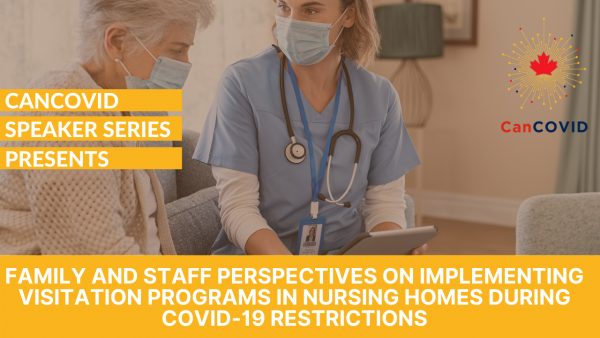Interventions to improve infection prevention and control for COVID‑19 in long-term care homes
Question: What is the impact of the COVID‑19 restrictive public health measures on the residents of long-term care homes, their family, and long-term care home staff, in terms of psychosocial, caregiving, and financial challenges?
Executive Summary
The COVID‑19 pandemic has exposed many pre-existing vulnerabilities in the long-term care (LTC) sector and has had a devastating impact on LTC residents, staff, caregivers, and families. Global research has sought to understand and address these challenges, by identifying the factors linked with risk, size, and deadliness of COVID‑19 outbreaks in long-term care homes (LTCHs) and recommending various interventions to strengthen infection prevention and control (IPAC). This report summarizes these findings.
Future investments in Canada’s LTC sector should consider the unique factors contributing to elevated cases, outbreaks, and mortality in LTCHs. Ownership status of LTCHs was highlighted as an important risk factor for COVID‑19 outbreaks early in the pandemic and several other factors emerged as being important in the literature (e.g. facility design, community incidence of COVID-19, availability of personal protective equipment (PPE) and testing equipment, facility staffing, and resident characteristics). Each of these factors presents unique risks and challenges for IPAC in LTCHs and will need to be addressed to protect residents, staff, caregivers, and families from outbreaks in the future.
To address these risk factors, eight broad areas for investment were identified in the literature. These included: staffing, physical infrastructure, IPAC, vaccination, inspection and regulation, data monitoring and surveillance, and financing. Vulnerabilities in these core areas have contributed to the high prevalence of infection, outbreaks and mortality observed in Canada during the COVID‑19 pandemic.
Key considerations for long-term care investments:
- Investments in several core areas may be required to adequately address the challenges facing Canada’s LTC system and prepare for the future.
- The value of some interventions is time-bound, therefore certain investments should be prioritized in the short term (e.g. strategies to increase COVID‑19 vaccine uptake in residents and staff) for maximum utility.
- A range of potential interventions is available to address common LTC challenges. These interventions can be selected and tailored to ensure effectiveness in the Canadian context.
- Resident, caregiver, family, and staff needs should be prioritized for all investments in the LTC sector. All interventions considered must balance infection prevention and control, and stakeholder wellbeing.
As the Netherlands and Denmark are considered to be high performing in LTC infection prevention and control, in another report, CanCOVID identified several best practices through semi-structured interviews with experts in LTC and also from an evidence scan. The following are “best practices” for IPAC in LTC as identified by the Netherlands and Denmark, that allowed for adoption supports and compliance measures (reference to CanCOVID’s report on OECD countries and LTC best practices):
- intelligent visitor “lockdown”
- investment in communications informed by behavioural science
- a well-funded LTC system
- relatively well-paid LTC staff
- cohort nursing (i.e. residents grouped and isolated together) and nurse cohorting (i.e. nurses designated to work with infected residents)
- centralized allocation of personal protective equipment (PPE) via new national consortium
- political attentiveness and broad public support for LTC sector
- de-institutionalized, home-based care for older adults
- individual “abodes” or home-like living spaces in all modern nursing homes
- professionalization and working conditions in LTC sector
- highly integrated social and health care systems
- vaccination rates (without mandate due to high willingness)
- re-vaccination/boosters for nursing home residents
- sick pay for staff and health care professionals
This report has several limitations:
- Data may have been missed or excluded to meet rapid deadlines.
- There was often insufficient real-world evidence to determine the effectiveness and cost-effectiveness of the interventions.
- Across jurisdictions, multiple interventions were often in effect simultaneously or at one time, therefore the impacts of individual interventions are rarely presented.





